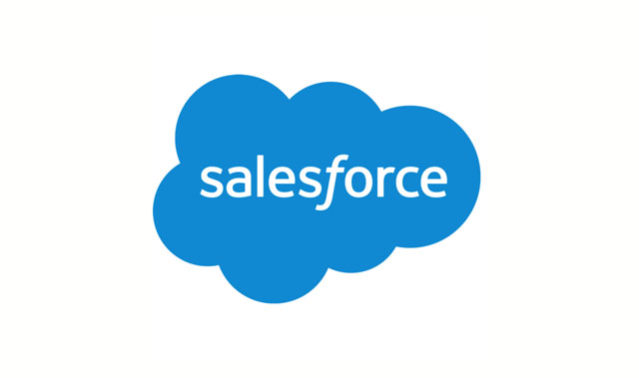oops concepts
1
Introduction to oops concepts
MVC Architecture
1
Model
2
View
3
Controller
Apex Programming Overview
1
CSS Introduction
Javascript Introduction
1
Internal
2
External
Static Resources
1
Adding Javascript files to the static resources
2
apex: includescript/>
Apex Class Creation – Calling
1
Defining Class
2
Access Specifiers
3
Method Declarations
4
Debugging results
5
Naming Conventions and Code Commenting
Data Types
1
Primitives
2
Collections (List, Set and Maps)
3
Subject
Controller
1
Standard Controllers
2
Custom Controller
Extensions
1
Extensions
Standard controller
1
Save – Standard controller with extension sample
Wrapper Classes
1
Display Multi-Object Data
2
Adding checkboxes to the data and perform related operations
View State
1
Inner Queries and Relational Queries
Triggers
1
Trigger Events
2
Trigger Overview
3
Defining Triggers in Salesforce
4
Trigger Context Variables
Ajax Components and its related components
1
Action Function
2
Action Support
3
Action Region
4
Action Pollar
5
Action Status
6
Rerender
7
Facet
8
Output panel
Packages
1
Package Overview
2
Defining Packages
3
Package Types
4
Managed Vs. Unmanaged Packages
Force.com Sites – Public Website Building
1
Building public websites for the external user
Batch Apex
1
Batch Apex Use and its Methods
Scheduling Apex
1
Scheduling Apex Use and its Methods
2
Limitations
Different Sandboxes
1
Sandbox Vs. Production Environments
2
Change Sets
3
Limitations
SALESFORCE ADMIN
Introduction to CRM
1
Why CRM?
2
Introduction to Cloud Computing and Salesforce.com
3
Cloud Computing Overview
4
What is Software-as-a-Service (SAAS)?
5
What is Platform-as-a-Service (PAAS)?
6
What is Infrastructure-as-a-Service (IAAS)?
What is Salesforce.com?
1
Salesforce.com CRM Editions
2
Salesforce Architecture – Cloud Computing is a better Model Multi-tenant
3
Salesforce Editions / Pricing
Salesforce.com Navigation – Overview
1
Salesforce Certifications
2
Certified Force.com Developer (401)
3
Certified Administration (201)
4
Certified Advanced Force.com Developer (501), etc.
Database Introduction
1
Database Model – Object Creation
2
Salesforce Building Blocks
3
Standard Objects
4
Create Custom Objects
5
CRM functionality in Salesforce and use of standard objects
6
Custom Objects Vs. Standard Objects
7
Create Custom Fields
8
Create custom Tabs
Types of Tab
1
Standard Objects – Account, Contacts, Leads, Campaigns, Opportunities, etc.
2
Custom Object Tabs
3
Web Tabs
4
Visual Force Tabs
Custom Application
1
Limitations
2
Field Creation and its Relationships.Different Data Types
3
Standard Data Types
4
Read-Only Data Types
Relational Data Types
1
Lookup Vs. Master-Detail Relationship
2
Limitations
3
Required, External ID, Default Value and Unique fields
Salesforce Application Elements
1
Home Page, Tabs, Tab Home Pages, Detail Page, Side Bar, Apps, Record
Page Layouts
1
Defining Page Layouts
2
Field Order Changes
3
Adding custom buttons and links
4
Defining required and read-only fields
5
Adding related list
Record Types
1
To create and maintain record types for your organization.
2
Display different page layouts and pick list values based on record types
3
Uses of record types
Field Dependencies
1
Controlling field / Dependent field?
2
Making dependent pick list fields
3
Limitations
Validation Rules
1
Defining Salesforce Data Validation
2
Creating Custom Validation Rules
3
Validation Vs. Trigger
Workflow Rules
1
Define workflow
2
Create Email template
3
Set up workflow rules
4
Set up workflow actions
Workflow Approval Process
1
Plan approvals using workflow
2
Use the approval wizard – standard vs. jump start
3
Create workflow approvals
Email Templates
1
Email Templates – Sending a single email and Mass emails
2
Types of Templates – HTML (Using Letter Head), Custom HTML (without using Letter Head), Visual force Email Templates
Data Management
1
Import Wizard Vs. Data Loader
2
Importing Overview
3
Exporting Overview
4
Import custom object records using the Data Loader
5
Use mass delete
6
Use storage
Personal Setup
1
Managing Personal Information
2
Password Reset
3
User Management Overview
4
Roles, Users, Profiles, and Sharing
Users
Roles
and Profiles
1
Creating Users
2
Users Licenses Overview
3
Understanding Record Ownership and Access
4
Role Hierarchy
5
Profiles
6
Overview and different Profiles
7
User Permissions
Security
1
Managing the Users
2
Set Organization-Wide Defaults (OWD)
3
Object-level Security
4
Field-level Security
5
Record-level Security
6
Sharing Rules
Reports and Dashboards
1
Reports and Dashboards
AppExchange
1
Installing an App
2
Uninstalling an App
Be the first to add a review.
Please, login to leave a review




